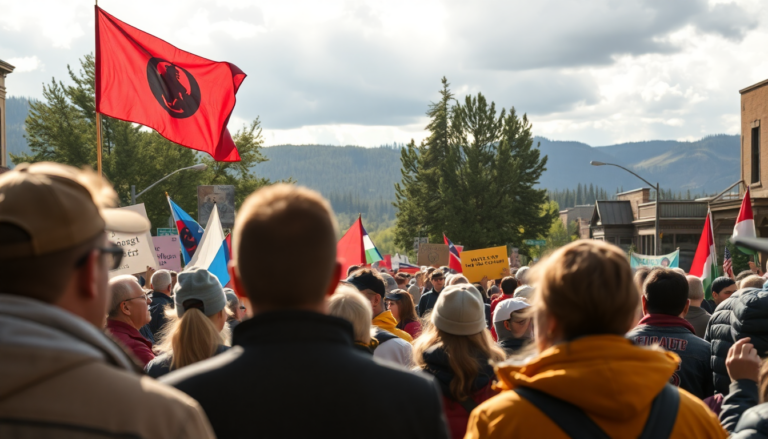Argomenti trattati
In recent weeks, Montana has been buzzing with a wave of protests. These demonstrations reflect a growing unease among residents about what they see as constitutional violations by the Trump administration. Part of a larger movement sweeping across the United States, these rallies have attracted thousands, all eager to voice their political frustrations and stand up for their rights. Interestingly, many of these events were strategically timed to coincide with a military parade in Washington, D.C., creating a striking juxtaposition between a celebration of military might and a fervent demand for civil liberties.
The Landscape of Protests in Montana
From Billings to Bozeman and Missoula, Montanans gathered to express their concerns. A notable turnout of around 1,000 people made their voices heard at the Montana Tribal Flag Plaza in Helena. This event, organized by local groups like the Indivisible chapter, featured speeches from a variety of community leaders, each sharing their unique perspectives on today’s political climate. The common thread running through these speeches was a passionate call for a return to constitutional values and a firm rejection of authoritarian governance.
Among the speakers was Pat Cotter, a former justice, who underscored the critical importance of the separation of powers—a principle many feel is under siege. Cotter’s message resonated deeply with the crowd, reflecting a growing awareness among citizens about how political decisions impact their rights and freedoms.
Diverse Voices and Concerns
The protests showcased a rich tapestry of opinions and concerns regarding the current administration’s policies. Some participants infused humor into their dissent, while others took a more solemn approach, drawing alarming parallels between today’s political actions and those of historical authoritarian regimes. Young voices, like recent high school graduate Charlie Snellman, highlighted the urgent need for political engagement among younger generations. Snellman’s speech, which compared current events to the early policies of Nazi Germany, ignited conversations about the importance of vigilance in protecting democratic values.
On the flip side, attendees like Jennifer Listerud championed a more measured approach to political discourse, advocating for constructive dialogue over personal attacks. This perspective reveals the complexities within the protest movement, uniting diverse opinions around a common goal: the preservation of democracy.
The Broader Implications of Political Mobilization
The protests in Montana mark a pivotal moment in the state’s political landscape, as citizens mobilize to assert their rights and express their discontent. The enthusiasm and commitment displayed by attendees signal a deeper engagement with political issues that goes beyond mere dissatisfaction with the administration. As these movements gain traction, they raise important questions about the future of political discourse and the potential for meaningful change.
Moreover, the implications of these protests extend well beyond Montana. They are part of a national conversation about the role of government, individual rights, and the responsibilities that come with citizenship. As we transition from spring to summer, the ongoing discussions ignited by these protests could shape not just local political dynamics but also influence broader national dialogues.

